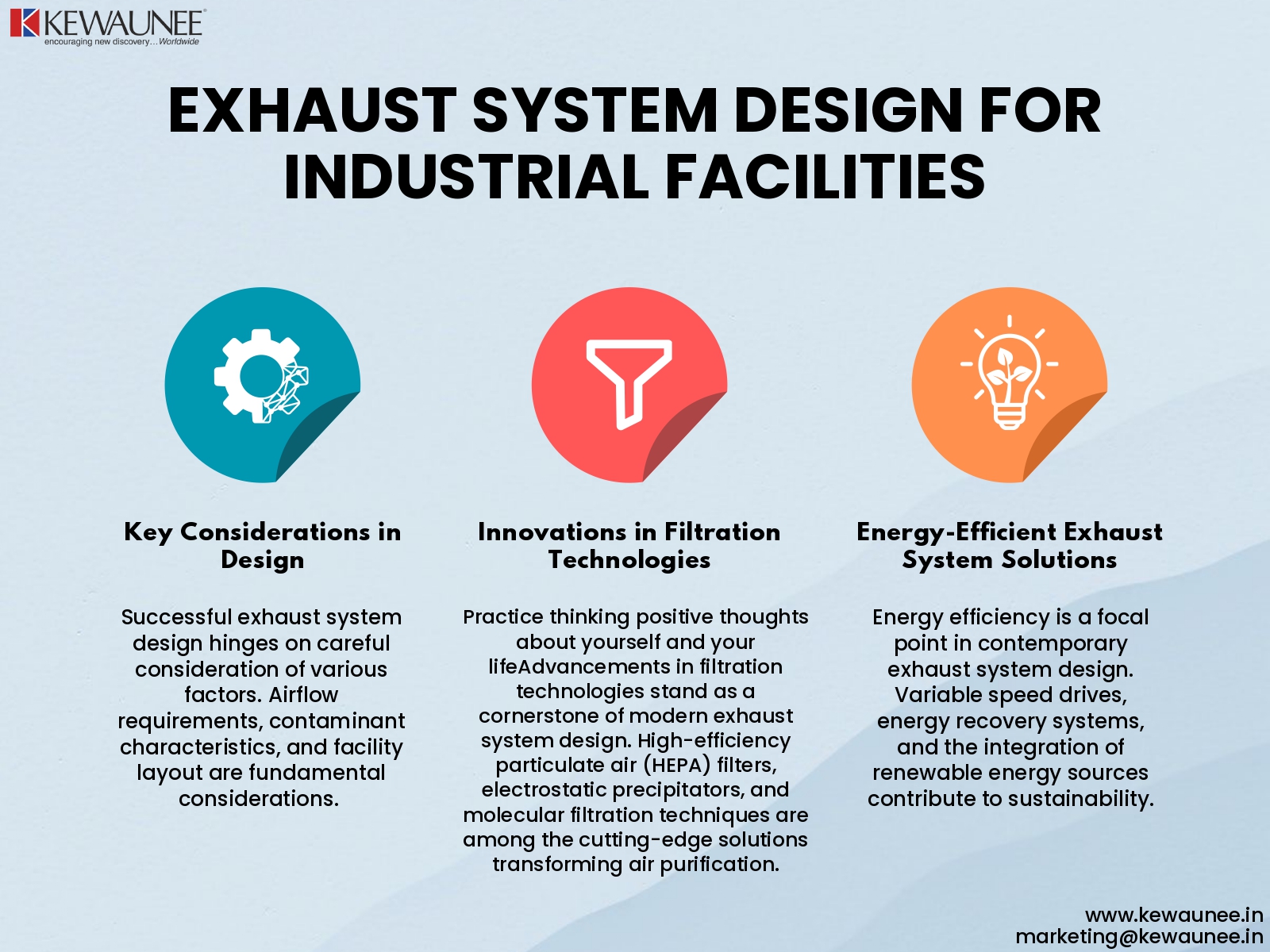Strategies and Innovations in Exhaust System Design for Industrial Facilities
In the realm of industrial facilities, the design of exhaust systems plays a pivotal role in maintaining air quality, ensuring worker safety, and adhering to environmental regulations.
This blog unravels the strategies and innovations that define modern exhaust system design, exploring the key considerations and advancements that contribute to efficient and effective air management.
1. Understanding the Importance of Exhaust System Design
Exhaust systems are the lungs of industrial facilities, responsible for expelling pollutants, contaminants, and by-products generated during various processes. Effective design goes beyond mere compliance; it ensures optimal ventilation, contaminant removal, and regulatory adherence.
Understanding the specific needs of the industrial processes at hand is paramount. Different facilities may produce varying types and volumes of pollutants, necessitating tailored exhaust solutions. A comprehensive understanding of the facility’s operations lays the foundation for a well-informed design.
2. Key Considerations in Exhaust System Design
Successful exhaust system design hinges on careful consideration of various factors. Airflow requirements, contaminant characteristics, and facility layout are fundamental considerations. The type of pollutants generated, whether particulate matter, gases, or vapors, dictates the selection of appropriate filtration and capture mechanisms.
Additionally, the placement and configuration of exhaust points, along with the integration of safety features such as emergency shut-off systems, are critical. A holistic approach that considers both the immediate and long-term needs of the facility ensures a robust design that evolves with changing operational dynamics.
3. Innovations in Filtration Technologies
Advancements in filtration technologies stand as a cornerstone of modern exhaust system design. High-efficiency particulate air (HEPA) filters, electrostatic precipitators, and molecular filtration techniques are among the cutting-edge solutions transforming air purification.
Incorporating smart filtration technologies that adapt to real-time air quality conditions is gaining prominence. These innovations not only enhance pollutant removal but also contribute to energy efficiency by optimizing filter usage based on actual contaminant levels.
4. Energy-Efficient Exhaust System Solutions
Energy efficiency is a focal point in contemporary exhaust system design. Variable speed drives, energy recovery systems, and the integration of renewable energy sources contribute to sustainability.
Implementing intelligent control systems that modulate exhaust rates based on production demands and air quality sensors further enhances energy efficiency. By striking a balance between effective ventilation and energy conservation, industrial facilities can achieve optimal environmental performance.
Summary
Clearing the air in industrial facilities goes beyond regulatory compliance; it requires a holistic approach to exhaust system design.
From understanding the unique needs of each facility to considering key design parameters, incorporating filtration innovations, and embracing energy-efficient solutions, this blog highlights the strategies and innovations shaping modern exhaust systems.
As industries navigate the complexities of air quality management, these advancements stand as testaments to the commitment to both worker safety and environmental responsibility.
Comments are closed.











